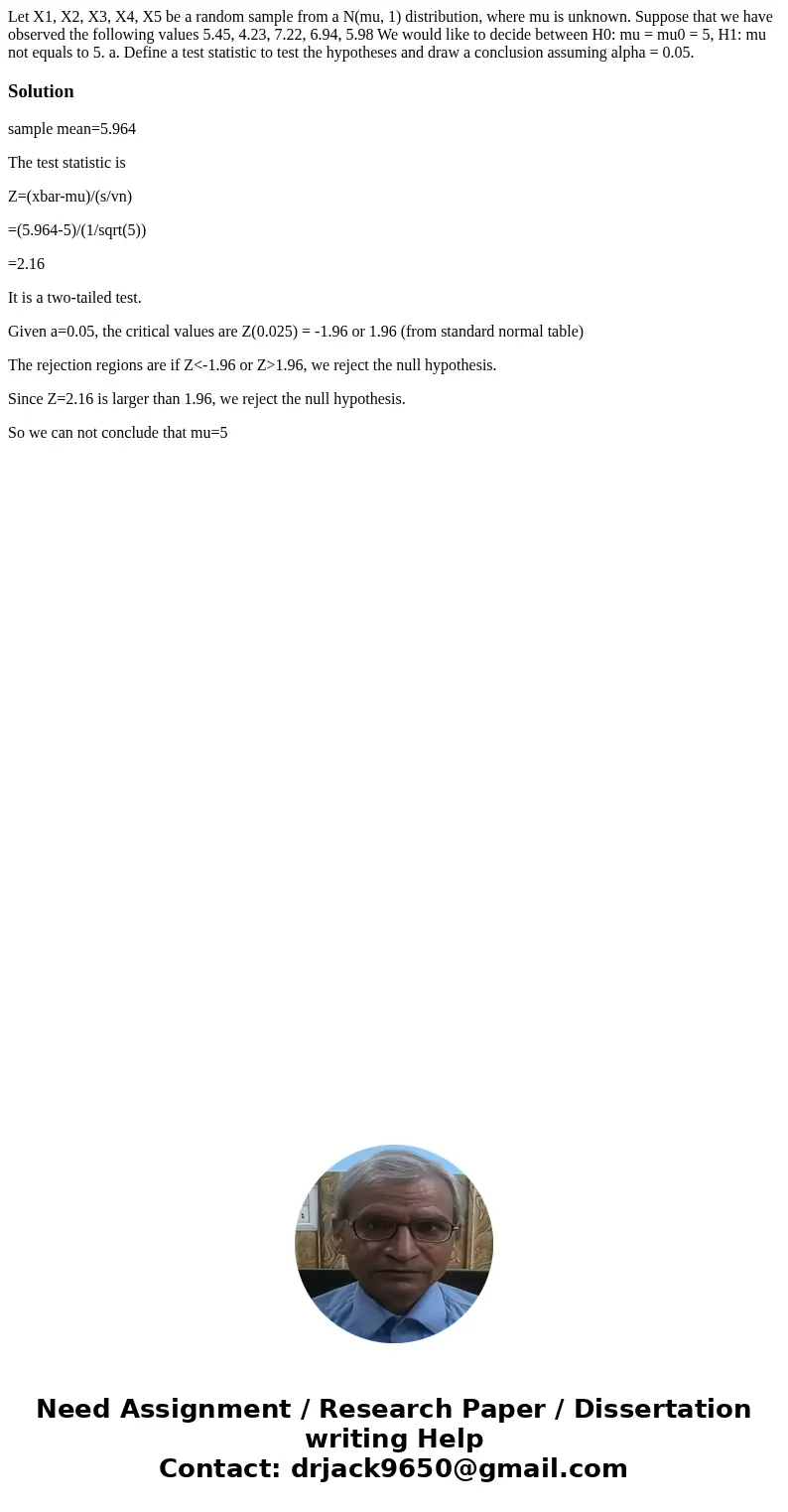Let X1 X2 X3 X4 X5 be a random sample from a Nmu 1 distribut
Let X1, X2, X3, X4, X5 be a random sample from a N(mu, 1) distribution, where mu is unknown. Suppose that we have observed the following values 5.45, 4.23, 7.22, 6.94, 5.98 We would like to decide between H0: mu = mu0 = 5, H1: mu not equals to 5. a. Define a test statistic to test the hypotheses and draw a conclusion assuming alpha = 0.05. 
Solution
sample mean=5.964
The test statistic is
Z=(xbar-mu)/(s/vn)
=(5.964-5)/(1/sqrt(5))
=2.16
It is a two-tailed test.
Given a=0.05, the critical values are Z(0.025) = -1.96 or 1.96 (from standard normal table)
The rejection regions are if Z<-1.96 or Z>1.96, we reject the null hypothesis.
Since Z=2.16 is larger than 1.96, we reject the null hypothesis.
So we can not conclude that mu=5

 Homework Sourse
Homework Sourse